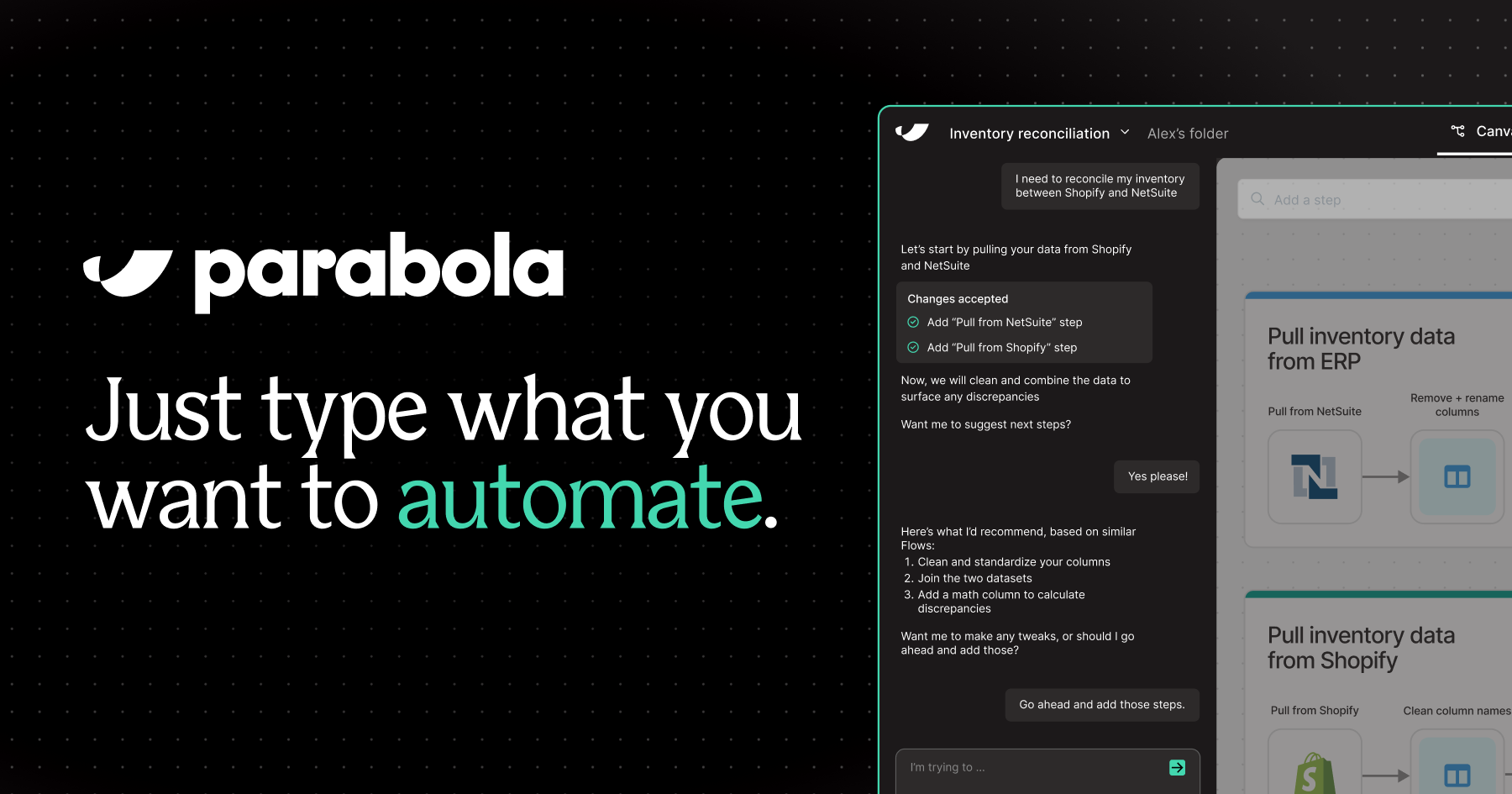Manual data standardization is tedious and error‑prone, often relying on operators cleaning fields one by one. This creates delays, bottlenecks, and inconsistent outputs across systems. With Parabola, AI automatically normalizes formats, detects duplicates, and ensures consistency across every dataset.
Eliminating chaos in data pipelines
In fast‑moving businesses, inconsistent data formats can grind operations to a halt. Manually standardizing names, SKUs, dates, and currency formats means hours of repetitive work that still leaves room for human error. As data volumes grow, this manual approach collapses — creating fragmented reports and eroding trust in metrics.
AI standardization changes the game by scaling effortlessly across millions of rows. It applies business rules instantly, learns from anomalies, and adapts as datasets evolve. Duplicates are flagged automatically, units are normalized, and every dataset is aligned to the same schema without human intervention.
With Parabola, ops and data teams spend less time firefighting errors and more time building insights that actually drive the business forward. Clean data becomes the default, not the exception.
Stop fixing data row by row — standardize it automatically using AI, with Parabola.
